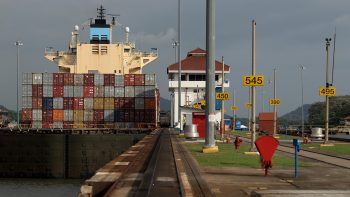
Bike shortage is a tale of changed lives and disrupted supply chains
Bike shortage is a tale of changed lives and disrupted supply chains

The pandemic has rearranged so many parts of this economy it’s hard to keep up. But we can add one more: bikes. There is a national — international, even — bike shortage. It’s been going on for months and will continue to go on for months.
It says a lot about how many of us are coping with pandemic reality, and says a lot about supply chains too.
If you have been to a bike store recently, you’ve probably seen some disappointed people.
“I’m here at the bike shop looking for a bike, but it doesn’t look like I’m finding one,” said Jonathan Bermudez. He’s at Al’s Cycle Solutions in Hell’s Kitchen, Manhattan. This is the third bike shop he’s been to this day.
“Everywhere I look, they don’t have what I needed,” Bermudez said. “I’m feeling a little frustrated.”
Also frustrated is Alain Guillerme, the owner of Al’s Cycle Solutions.
“I don’t have any more bikes — period,” he said. “You can see all my racks are empty. [The] problem is I don’t have enough supply to make money right now.”
Bike theft is 18% higher year to date in New York. Theft of bikes worth $1,000 or more is up 53%, which of course in turn fuels more demand. The shortage is international and started in January, when the coronavirus shut down factories in East Asia, the center of the bike industry’s supply chain. Eric Bjorling is director of brand at Trek Bicycles, a U.S. bike manufacturer.
“When those countries shut down and those factories shut down, there were just no bikes being made industrywide,” he said. “Those are the bikes that are supposed to arrive in April, May, June, July.”
And while a supply shortage was brewing, demand was about to explode. It started when everybody was stuck at home with their kids and decided to get them bikes.
“March, April, May — the bikes that are all going are kids’ bikes,” Bjorling said.
Then the adults got bored.
“Then you had your entry-level hybrids and mountain bikes,” he continued. “Now those are bikes that are used for family bike rides on trails and paths.”
And you had your commuters who didn’t want to be stuck in buses or subway cars.
“As public transit was viewed in a different light, so was the bicycle. And we saw an explosion of commuters,” Bjorling said.
So why then couldn’t bike factories just … you know … make more bikes?
“The industry wasn’t running with lots of spare capacity to start with,” said Chris Rogers, the supply chain analyst at S&P Global Market Intelligence.
“What the industry doesn’t want to do is double its capacity to meet the increased demand,” Rogers said, “and then we turn round in the winter or next year when everyone’s got a bike and suddenly you’re left with a factory that’s too big and machinery or staff that aren’t being used anymore.”
Rogers said the bike industry’s troubles are emblematic of a lot of industries right now, trying to tame wild fluctuations in supply and demand. But as far as bikes go, he said they’re coming, they’re just coming late. The next flush of entry-level bikes and parts will probably get here around September or October.
There’s a lot happening in the world. Through it all, Marketplace is here for you.
You rely on Marketplace to break down the world’s events and tell you how it affects you in a fact-based, approachable way. We rely on your financial support to keep making that possible.
Your donation today powers the independent journalism that you rely on. For just $5/month, you can help sustain Marketplace so we can keep reporting on the things that matter to you.


















